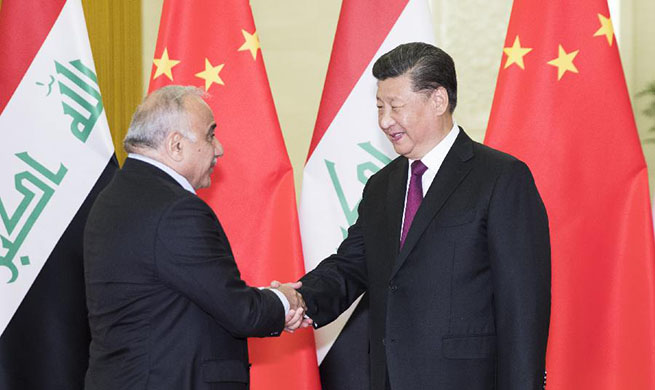BEIJING, Sept. 24 (Xinhua) -- From a semi-closed nation that barely had any overseas contact, to a world economic engine with high-level opening up in all aspects, China has made miracles in expanding its market and contributing to the world.
BOOMING FREE TRADE ZONES
Since China set up four special economic zones in Shenzhen, Zhuhai, Shantou and Xiamen in 1980, the country's steps of opening up its market have never stopped.
So far, China has established 18 free trade zones (FTZs) across the country since it started the experiment in Shanghai in 2013. The zones act as testing grounds to experiment new regulations and explore ways to improve the business environment that would later be replicated nationwide.
With institutional advantages, China's FTZs have helped better serve the country's real economy, boost foreign trade, and attract high-quality personnel and high-tech companies from overseas with a better business environment and better intellectual property protection.
Between 1950 and 1977, the country's average annual trade growth was less than 10 percent. From 1978, when China started to implement the reform and opening-up policy, to 2018, the annualized trade growth was 14.5 percent.
THRIVING FDI
From the shortened negative lists, which outline sectors off-limits to foreign investment, to the foreign investment law that will offer better protection for overseas investors, China's commitment to further opening up has continued boosting foreign companies' confidence.
In 2018, foreign direct investment (FDI) into China reached 138.3 billion U.S. dollars, 151 times that of 1983 and representing an average annual rate of 15.4 percent.
By the end of 2018, FDI inflow to China had ranked second in the world for two consecutive years and first among developing countries for 27 consecutive years.
Over 960,000 foreign-invested enterprises had been set up in China by the end of last year, with the accumulated FDI exceeding 2.1 trillion dollars.
At present, the country has attracted investment from over 200 countries and regions. In 2018, major investments came from Asia, the European Union, North America and free port areas.
FLOURISHING BELT AND ROAD
The China-proposed Belt and Road Initiative (BRI), under which China has signed cooperation documents with more than 160 countries and international organizations, is a good example of China's opening-up efforts.
The BRI has opened up new space for the world economy with better-than-expected results, effectively spurring trade and economic growth and stimulating investment and creating jobs worldwide.
In less than six years, the BRI has been extended from Asia and Europe to Africa, the Americas and Oceania. The collective action under the BRI is unprecedented in history.
From 2013 to 2018, the trade volume between China and other countries along the Belt and Road surpassed 6 trillion dollars, and China's investment in those countries exceeded 90 billion dollars.
Thanks to the BRI, eastern Africa has its own expressway, the Maldives has its first inter-island bridge, Belarus can produce sedans and the number of freight trains between China and Europe is on the rise. The once rusted Greek port of Piraeus has become one of the world's fastest-growing container terminals.
Seventy years on, the success story of China's opening up will continue around the world.

















